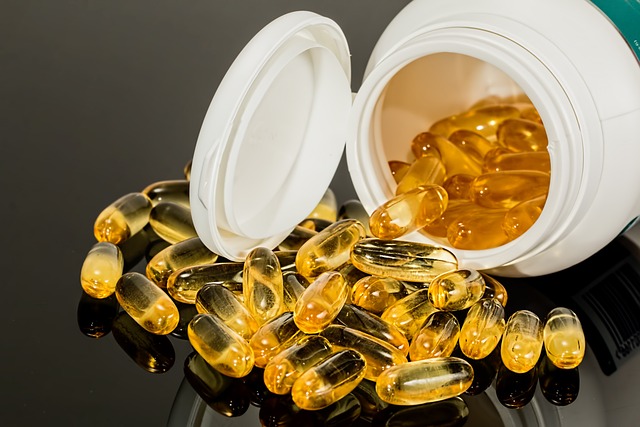-
Table of Contents
- Peptides Uncovered: The Science of Youth and Recovery
- Understanding Peptides
- Types of Peptides
- Peptides and Youth
- Collagen-Boosting Peptides
- Case Study: Matrixyl
- Peptides and Recovery
- BPC-157
- TB-500
- Peptides in Medicine
- Diabetes Management
- Cancer Therapy
- Safety and Regulation
- Regulatory Framework
- Conclusion
Peptides Uncovered: The Science of Youth and Recovery
Peptides have garnered significant attention in recent years for their potential benefits in promoting youth and aiding recovery. These short chains of amino acids play a pivotal role in various biological processes, making them a subject of interest for researchers and health enthusiasts alike. This article delves into the science behind peptides, their applications, and the evidence supporting their efficacy.
Understanding Peptides
Peptides are short chains of amino acids, typically consisting of 2 to 50 amino acids. They are smaller than proteins, which are long chains of amino acids. Peptides are naturally occurring in the body and are involved in numerous physiological functions, including hormone production, immune response, and cell signaling.
Types of Peptides
- Signal Peptides: These peptides play a role in cell communication and signaling pathways.
- Carrier Peptides: These peptides transport essential molecules to specific sites in the body.
- Enzyme Inhibitor Peptides: These peptides inhibit the activity of specific enzymes, regulating various biological processes.
- Neuropeptides: These peptides function as neurotransmitters, influencing brain activity and behavior.
Peptides and Youth
The quest for youthful skin has led to the exploration of peptides in skincare. Peptides are believed to stimulate collagen production, which is essential for maintaining skin elasticity and firmness. Collagen is a protein that provides structure to the skin, and its production decreases with age, leading to wrinkles and sagging skin.
Collagen-Boosting Peptides
Collagen-boosting peptides, such as palmitoyl pentapeptide-4, have been shown to promote collagen synthesis. A study published in the International Journal of Cosmetic Science found that palmitoyl pentapeptide-4 significantly improved skin texture and reduced the appearance of wrinkles after 12 weeks of use.
Case Study: Matrixyl
Matrixyl, a popular peptide in anti-aging skincare products, has been extensively studied for its efficacy. A clinical trial involving 93 women aged 35 to 55 demonstrated that Matrixyl reduced wrinkle depth by 27% and improved skin tone and elasticity after two months of use.
Peptides and Recovery
Athletes and fitness enthusiasts have turned to peptides for their potential to enhance recovery and performance. Peptides such as BPC-157 and TB-500 are known for their regenerative properties, aiding in muscle repair and reducing inflammation.
BPC-157
BPC-157, a peptide derived from a protein found in the stomach, has shown promise in accelerating the healing of various tissues, including muscles, tendons, and ligaments. Research published in the Journal of Applied Physiology indicated that BPC-157 significantly improved muscle healing in rats with induced muscle injuries.
TB-500
TB-500, a synthetic version of the naturally occurring peptide thymosin beta-4, has been studied for its ability to promote cell migration and tissue repair. A study in the journal Wound Repair and Regeneration found that TB-500 enhanced wound healing and reduced inflammation in animal models.
Peptides in Medicine
Beyond skincare and sports recovery, peptides have shown potential in various medical applications. They are being investigated for their role in treating conditions such as diabetes, cancer, and autoimmune diseases.
Diabetes Management
Peptides like GLP-1 (glucagon-like peptide-1) have been used in the management of type 2 diabetes. GLP-1 analogs, such as exenatide and liraglutide, help regulate blood sugar levels by stimulating insulin secretion and inhibiting glucagon release. Clinical trials have demonstrated the efficacy of GLP-1 analogs in improving glycemic control and promoting weight loss in diabetic patients.
Cancer Therapy
Peptides are being explored as targeted therapies for cancer treatment. Peptide-based drugs can selectively bind to cancer cells, delivering therapeutic agents directly to the tumor site. This approach minimizes damage to healthy tissues and reduces side effects. Research published in the journal Cancer Research highlighted the potential of peptide-based therapies in targeting specific cancer cell receptors and inhibiting tumor growth.
Safety and Regulation
While peptides offer promising benefits, their safety and regulation are important considerations. The use of peptides in supplements and cosmetics is subject to regulatory oversight to ensure their safety and efficacy. It is advisable to consult with healthcare professionals before using peptide-based products, especially for individuals with underlying health conditions or those taking medications.
Regulatory Framework
The regulatory framework for peptides varies by region. In the United States, the Food and Drug Administration (FDA) oversees the approval and regulation of peptide-based drugs and cosmetics. The European Medicines Agency (EMA) and other regulatory bodies have similar roles in their respective regions. These agencies evaluate the safety, efficacy, and quality of peptide products before they are approved for market use.
Conclusion
Peptides hold significant potential in promoting youth and aiding recovery. Their ability to stimulate collagen production, accelerate tissue repair, and regulate various biological processes makes them valuable in skincare, sports recovery, and medical applications. While the benefits of peptides are supported by scientific research, it is important to approach their use with caution and seek professional advice when necessary. As research continues to uncover the full potential of peptides, they may become an integral part of our quest for health and vitality.
